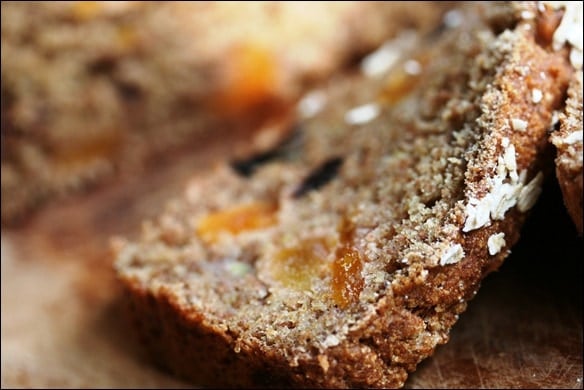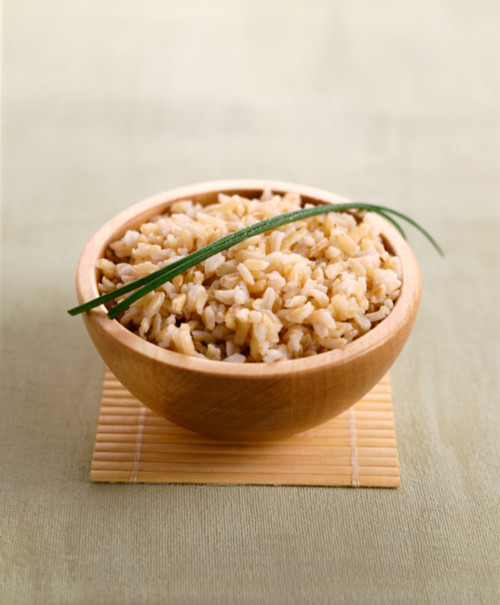With the recent popularity of low-carb plans like Atkins and the South Beach diet, it’s hard to remember a time when filling up on fibre was trendy. But back in the early 80’s, wholemeal bread, bran cereals and jacket spuds were almost as popular as Spandau Ballet, Rubik’s cubes and puffball skirts. Following huge amounts of scientific research, health professionals suddenly revealed that if you wanted to stay healthy and lose weight, you should eat more dietary fibre.
Enter Audrey Eyton’s world-famous F-plan diet! In May 1982, copies of The F-Plan Diet went on sale, and even today it remains popular. Ultimately, it promoted a high-fibre, low-fat, calorie-controlled eating plan – in fact, pretty much what nutrition experts still recommend today if you want to lose weight.
What is dietary fibre?
Previously called ‘roughage’, dietary fibre is the term that describes the carbohydrates that human’s can’t digest. Dietary fibre is found in plant foods such as cereals, pulses, fruits and vegetables and occurs mainly in the plant cell wall where it provides structural support for the plant.
What’s the link with weight loss?
Most high-fibre plans for weight loss still come with a reduction in calories. The F-Plan diet, for example, recommended a calorie restriction of between 850-1,500 calories a day – and of course, it’s this calorie restriction that helps you lose weight. However, there are many reasons why including more fibre in your diet can help boost weight loss and make slimming less painful.
To start with, unlike other carbohydrates, most dietary fibre doesn’t provide anycalories. This means fibre-rich foods are often lower in energy than foods containing no fibre or only small amounts, making them ideal for people who are trying to lose weight.
Secondly, high fibre foods generally take longer to chew. As well as helping you to feel more satisfied when you eat, this automatically slows down the speed at which you eat, giving your brain time to register feelings of fullness so that you’re less like to overeat. But that’s not the only way fibre-rich foods help to control appetite. Fibre acts like a sponge and absorbs and holds on to water as its chewed in the mouth and passes into the stomach. This means fibre-rich foods swell up in your stomach and this can help to fill you up. Better still, fibre stays in the stomach for longer as it’s harder to digest and this helps to keep you feeling fuller for longer, so you’re less likely to want to snack in between meals.
So how much fibre should I eat a day to lose weight and how much can I expect to lose?
Regardless of whether you want to lose weight or maintain your weight, the Department of Health recommends adults eat an average of 18g of fibre a day with a range of 12-24g. If you want to lose weight, you’ll still need to restrict your calorie intake as recommended by Weight Loss Resources and the amount you can expect to lose will depend entirely on the degree of this restriction. Weight Loss Resources recommends you aim to lose no more than 2lb a week, although you might lose slightly more in the first few weeks when your body loses water as well as fat. This follows the guidelines recommended by nutrition experts.
Has a high-fibre diet got any other health benefits?
Definitely. Having spent a long time in the stomach, fibre moves through the large intestine relatively quickly and health experts believe this helps to keep the digestive system healthy, preventing bowel problems such as constipation, diverticular disease and haemorrhoids (piles), as well as reducing the risk of bowel cancer. Interestingly, all these conditions tend to be uncommon in undeveloped countries where intakes of fibre are high, compared to Western societies where these medical problems are widespread and fibre intakes are low.
Furthermore, most fibre-rich foods are also low in fat and packed with vitamins and minerals – and when it comes to preventing disease, it seems that it’s this whole package of nutrients that’s important. For example, wholegrains like wheat, barley, oats, rye and rice contain not just fibre, but a number of nutrients that may reduce the risk of heart disease, stroke, certain cancers and diabetes by as much as 30 per cent. These include antioxidant nutrients vitamin E, zinc and selenium and a range of plant compounds called phytochemicals.
I’d heard that a high-fibre intake was good for my heart. What’s the link?
Several large studies in America, Finland and Norway have found that people who eat relatively large amounts of wholegrain cereals have significantly lower rates of heart disease and stroke. It’s thought that a particular type of fibre called soluble fibre may be partly responsible as it helps to lower blood cholesterol levels.
Tell me more about soluble fibre?
Dietary fibre can be divided into two main types – soluble and insoluble fibre. Soluble fibre is thought to bind with cholesterol and prevent it from being reabsorbed into the bloodstream. This lowers the amount of cholesterol in the blood, therefore reducing the risk of heart disease. But that’s not all. Soluble fibre also forms a gel in the intestine, which is thought to slow down the digestion and absorption of carbohydrates, especially glucose. This means it can help to keep blood sugar levels steady, preventing feelings of hunger that leave you reaching for the biscuit tin. Foods rich in soluble fibre include fruits,vegetables, oats, barley, and pulses such as beans, lentils and peas.
In contrast, insoluble fibre helps to keep the digestive system in good working order by increasing the bulk and softness of the stools, which in turn assists the smooth passage of food through the body. It’s this type of fibre that helps to prevent bowel complaints like constipation and cancer. Foods rich in insoluble fibre include wholemeal flour and bread, wholegrain breakfast cereals, bran, brown rice, wholemeal pasta, grains and some fruits and vegetables.
Eating a range of fibre-rich foods, rather than just one or two sources, is the best way to ensure you get a mixture of both soluble and insoluble fibre – and make the most of the health benefits offered by both.
So is a high-fibre diet suitable for people with diabetes?
Yes, health experts recommend that people with diabetes have a good intake of fibre in the same way as the rest of the population. But it’s always wise to speak to your doctor or dietitian before making any changes to your diet, especially if you are on medication such as tablets or insulin.
What about high-fibre intakes for children?
Although older children and teenagers will benefit from eating plenty of fibre-rich foods, very young children shouldn’t be given large amounts. This is because they have small tummies and generally consume much smaller quantities of food than older children and adults. Because fibre-rich foods tend to be filling but reasonably low in energy, young children may not be able to satisfy their energy requirements and this may mean they don’t grow as well as they should.
Is it still possible to get enough fibre if I follow a wheat-free diet?
Yes, providing you include plenty of fruit, veg, pulses and brown rice. See the chart here to see how you can make up 18g of fibre a day using non-wheat foods.
Is there a link with fibre and the glycaemic index of a food?
Yes. Generally speaking, the more fibre a food contains the lower its glycaemic index will be. This is because fibre acts as a physical barrier and slows down the absorption of carbohydrates into the blood.
Are there any cons to high fibre diets?
Wind is the main problem! Some fibre is fermented in the large intestine by bacteria that live there and this results in the production of gases like methane, hydrogen and carbon dioxide. The amount of gas produced depends on the type of fibre eaten and the gut bacteria present. But it explains why some slimmers find that excessive wind, discomfort and bloating occur if they suddenly boost their fibre intake to help them lose weight.
Fortunately, this is usually a short-lived problem as the large intestine and gut bacteria gradually adapt to an increased intake of fibre. That’s why it’s important to introduce fibre-rich foods into the diet gradually – and to persevere with them.
Constipation can also be a side effect of a high-fibre diet if fluid intake isn’t also increased. This is because fibre acts like a sponge and absorbs water. The easiest way to avoid this, is to boost fluid intakes together with fibre intakes.
Juliette’s verdict
Like most nutritionists and dietitians, I’m a big fan of high-fibre diets, not just because they can help to reduce the risk of health problems ranging from constipation and piles to heart disease and cancer, but also because they help to fill us up. This is crucial if we want to lose weight, but it’s also important in helping us to keep our weight steady, so that we avoid becoming overweight or obese in the future. I suggest people who worry that eating more fibre will give them wind, at least give it a go and continue to persevere. This really is a small price to pay for such major health and weight loss benefits and is only a temporary problem anyway. Once you see the pounds starting to drop off, you’ll automatically reach for all things brown and ditch the white stuff from your daily diet.
Source
http://www.weightlossresources.co.uk/diet/high_fibre.htm








No comments:
Post a Comment